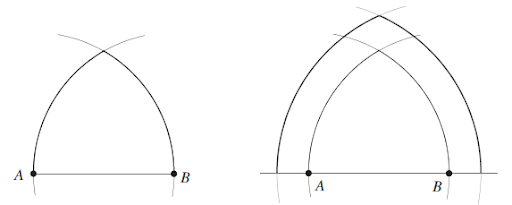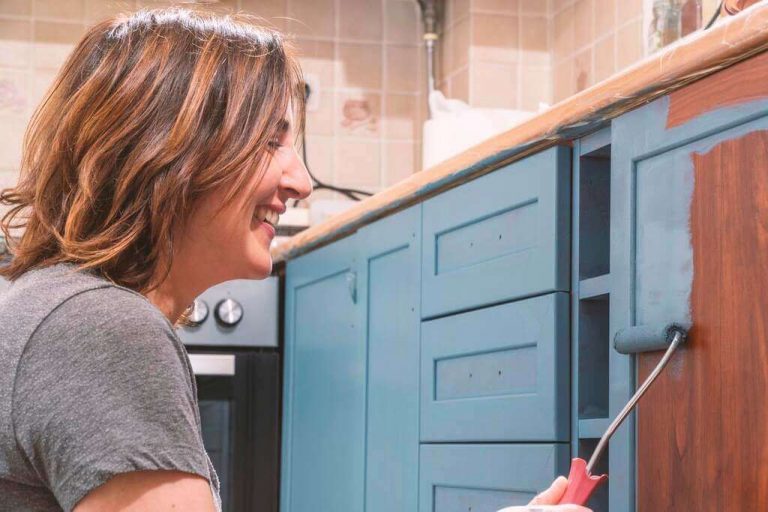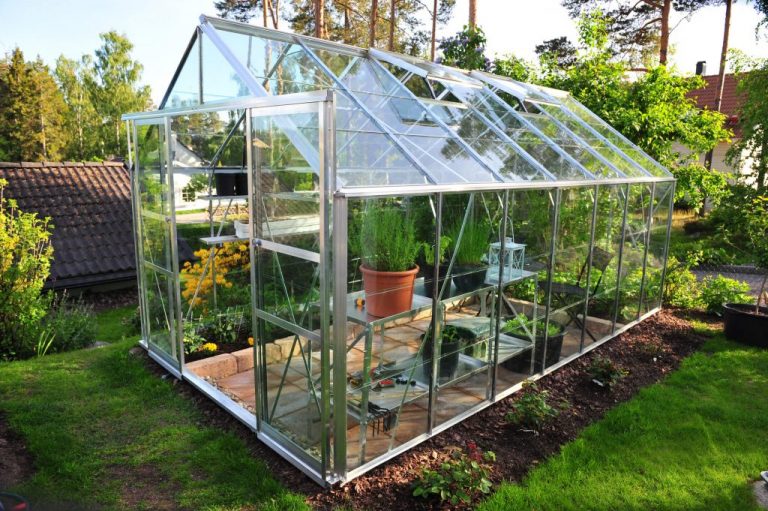How to clean oven? This question has always lingered in our minds every time we turn our backs on our dirty ovens. Ovens can quickly become a mess in the kitchen. You can find steak drippings forming a gooey mess at the bottom, a stray French fry turned to charcoal on the rack, and a greasy film on the glass, making it hard to see inside.
Feeling lost on where to start cleaning your oven? Don’t worry; it’s not as tough as it seems. The payoff of a clean oven and tastier food makes it worth it. Thankfully, there are easy methods to get your oven sparkling again. From simple button pushes to grease-melting concoctions, here’s all you need to know to clean your oven effectively.
How Often Should You Clean Your Oven?
A number of brand owners advise cleaning your oven every three months or more often if required. Doing a little spot-cleaning at the beginning of the month is also a smart idea. But remember, how often you clean really depends on how much you use your oven.
If you cook or bake a lot, or if you notice burnt bits, odors, or grease buildup, you’ll want to clean it more often. On the other hand, if you rarely use it, every four to six months might suffice. Regularly cleaning and looking after your oven will keep it running smoothly. After each use, a quick wipe-down will prevent grime and buildup from building up.
Cleaning up becomes simpler the better you take care of your oven. Maintaining your oven also guarantees that your food tastes better and slows the spread of germs, which lessens the brunt of a burnt oven.
Using the Self-Cleaning Feature
When your oven is self-cleaning, why put in the additional work to scrape it? When your oven is in top shape, the self-cleaning mode is safe, but there are drawbacks. It works best in well-ventilated homes and may be rather bothersome. A self-cleaning oven has the potential to release fumes, such as carbon monoxide, from burning food residue. Additionally, this mode may produce smoke that sets off your fire alarms and gives your house an odor of smoke.
We advise opening your windows and turning on the range hood’s vent just to be safe. Just be aware that using the vent may cause noise for a few hours, and you may feel drafty or damp air entering the room, so make plans appropriately.
How to Clean Inside of Oven
Are you unsure of how to clean the inside of your oven? Ultimately, it all depends on the kind of cleaning you choose to employ. Although experts recommend using a standard commercial oven cleaning, you can opt for a homemade solution if you’re interested in environmentally responsible solutions. Either way, we’ve included instructions for both approaches below.
Here’s what you’ll need:
Baking soda
Commercial cleaner
Gloves and protective eyewear
Microfiber cloth
Vinegar
Follow these steps to clean the inside of your oven:
Whenever you clean your oven, make sure it has cooled up and turned off.
Take away the oven racks.
Put aluminum foil over the thermostat, wires, and heating components. When using eco-friendly cleaning products, this step is not only prudent for peace of mind but also essential if you’re using a professional cleaner.
Use safety gear, such as rubber gloves and goggles, while using a professional cleaner. Pay close attention to everything the cleaner says. Make a note of the cleaner’s temperature settings—if it is meant for hot cleaning, you may need to preheat the oven.
For green housekeeping projects at home: Sprinkle your oven with a mixture of 1/2 cup baking soda and 3 teaspoons water. Give it a whole night to settle. Use a moist towel and vinegar to clean the oven after that.
How to Clean Oven Racks
You’ll need to clean this crucial part of the oven regularly to get rid of tough stains and spills.
Here’s what you’ll need:
Baking soda
Soap
Sponge
Here are some tips for how to clean an oven rack:
To clean the racks on a regular basis, use hot water and a sponge dipped in soap.
Soak the oven racks in a solution of hot water, dish soap, and a couple of spoonfuls of baking soda for more stubborn problems.
After letting them soak in this mixture for fifteen to thirty minutes, use a soft sponge to scrub them clean.
How to Clean the Oven Door
Oven Door Exterior
The exterior of your oven door should not be cleaned with abrasive chemicals as they can release harmful gases. Abrasive materials that can scratch stainless steel or metal should also be avoided.
Here’s what you’ll need:
Soap
Sponge
Follow these steps recommended by experts to clean oven doors:
After wetting a sponge with hot water, apply soap to it.
Wipe down the oven doors with the soapy sponge.
Care tip: To keep the porcelain enamel outside of your oven in pristine condition, wipe up any acidic spills (such as vinegar or tomato juice) as soon as the whole range cools down.
How To Clean Oven Glass
Glass on the oven door, particularly the space between the inner and outer panels, can get dirty. However, don’t worry—you can clean everything up. Your oven can look unclean, even with little blemishes on the glass. Wipe spills as soon as they happen (after the surface has cooled, of course!) to keep it sparkling clean and residue-free.
To avoid accumulation, we advise washing the area between the oven’s glass once or twice a year. Steel wool and really harsh sponges should be avoided since they might harm the glass.
Here’s what you’ll need:
Baking soda
Microfiber cloth
Sponge
Vacuum
White vinegar
Follow these instructions to clean the space between the oven door glasses:
The following is how to clean oven door glass from the insides:
Take out the glass from the oven door. Depending on the type of your oven, you may need to remove several screws to disassemble the door.
After removing, clean the doors both inside and out thoroughly with a vacuum to eliminate any leftover dirt.
Using a tiny cleaning brush, remove dust and crumbs from areas where your vacuum attachments aren’t fitting.
Combine baking soda and white vinegar to form a paste. Using a sponge and this paste, clean all areas of the glass door of spills and stains.
The paste will have to stay for up to 10 minutes on stubborn spots.
Using a warm, moist microfiber cloth, thoroughly wipe the door; repeat as needed.
After the door has completely dried, reinstall the glass. Make sure to tighten the screws firmly.
How to Clean Oven Knobs and Handles
Do not forget to clean the most used and often-overlooked areas of your oven. They gradually amass fingerprints, oil smudges, and food debris. Always wipe them off after cleaning the remainder of your oven.
Here’s what you’ll need:
Baking soda
Disinfectant wipes
Sponge
Here’s how to clean oven knobs and handles:
To remove any food debris or grime, sprinkle or wipe the surface with baking soda. Then, use a moist sponge to remove the excess soda.
Another option for a fast cleaning of your knobs is to use disinfectant wipes.
Tips to Keep Your Oven Clean Longer
Following these extra techniques will keep your oven clean for a longer period of time:
To prevent oils and grease from dripping into the oven, cover the bottom with aluminum foil or use oven liners. Take care not to leave the liners or foil on after baking.
Make sure your baking pans aren’t too full so that the food doesn’t spill out as it’s cooking.
To avoid messy splatters when baking, cover baking pans with lids or foil that are safe to use in ovens.
Roasting bags are great for containing splatters and bringing out the best taste in meals.
When preparing pies or casseroles, generously sprinkle salt over any liquid that may leak. The salty mess will be much simpler to remove with a spatula once the oven has cooled than with a hard, baked-on stain.
Clean your oven with steam after each baking session. It’s an easy and safe technique to remove light dirt and filth but take care to remove the bowl of water from the oven after usage.
5 Oven Cleaning Mistakes to Avoid
Whether this is your first or fifty-first oven cleaning, here are several pitfalls to avoid:
After cleaning, close the oven door right away. To ensure full drying, leave it open for a minimum of one hour. Premature closing might cause rust to form on the inside of the oven, which can reduce its lifetime.
Avoid falling for the latest “hacks” for cleaning your oven that you see on social media. Although using salt to cover the oven and then heating it to clean it seems like a good idea at the time, the abrasiveness of the salt might actually damage the insides of the oven.
It’s important to clean the oven after every use. You can keep the oven in good working order and cut down on the frequency of extensive cleaning by following this easy procedure. While you’re washing dishes or storing leftovers, quickly wipe off the oven after it has cooled down from cooking.
When cleaning your oven, stay away from metal utensils. If you’ve never cleaned it before, this is a certain way to ruin it. For more secure cleaning, use just the liquid solutions we discussed before.
To prevent the accumulation of grease during baking, use a baking sheet or a piece of aluminum foil on the lowest rack to collect any spills. To further reduce the buildup of filth, you may wipe off the inside of the oven after each usage.
What Is The Best Way To Clean A Dirty Oven?
Here are a few tried-and-true methods for keeping your oven clean:
1. Baking Soda Paste
To make a paste out of baking soda and water, you can add a few drops of dishwashing liquid for more powerful cleaning potential. Scrub the oven racks with a sponge or towel after the paste has sat for 15 minutes.
2. Use Lemons
One lemon trick is to fill a spray bottle with water and lemon juice in proportions from one to the other. To clean the oven, spray the inside and outside with the solution, wait a few minutes, and then use a moist sponge or towel to wipe it off.
3. Use Dishwashing Tablets
Make a paste with a dishwashing tablet by dropping it into a basin of water. After 15 minutes of sitting, scrub the oven racks with a sponge or towel after applying this mixture.
4. Add Some Salt
To soak up oil and grease, sprinkle some salt on any oven leaks or spills. After the oven has cooled, remove the salt and any leftover residue with a damp cloth.
5. White Vinegar Remedy
To use white vinegar as a steam cleaner, just put a bowl of vinegar in the oven. After 30 minutes of steaming in a 250°F oven, remove any oil spots by wiping the surface.
6. Get a Rack-Cleaning Kit
These include everything you need to clean and disinfect your oven’s racks.
7. Oven Liners
To avoid fires, use oven liners. Lay heat-resistant liners on the oven’s base to collect drips and spills, and change or clean them often.
Best Cleaning Tools…
Acquiring the proper cleaning equipment can simplify and expedite the process of restoring a dirty oven. Some of the more effective ones are these:
1. Paper Towels
To remove recent spills or stains, particularly from the oven door, a paper towel works wonders. Not only are they easy to dispose of, but they also absorb oil and dirt.
2. Microfiber Cloth
To protect your oven, use a microfiber cloth instead of a rough sponge or scouring pad. A microfiber cloth is preferable. Not only is it three times more efficient than ordinary paper towels, but it is also soft and absorbent, killing up to 99% of germs. And it’s washable, so you may use it again and again.
3. Old Towels
If you want to remove stubborn stains and residue from your oven without damaging the surface, try using an old towel. They’re more convenient than microfiber cloths, less expensive, and three times as effective as paper towels.
4. Toothbrush
Repurpose an old toothbrush to clean those tough-to-reach corners of your oven. After dipping it in a homemade cleaning solution, you may use it to scrub the oven door and walls free of food debris and oil. Be careful not to scratch the surfaces of your oven by using a bristle-heavy old toothbrush.
FAQs
Stir together about half a cup of baking soda and enough water to form a spreadable mixture. To make the baking soda into the correct consistency, slowly add warm water while stirring constantly. You may need to double or even triple the paste recipe, depending on the size of your oven. The next step is to put the paste inside the oven using a standard paintbrush.
Use a spray bottle filled with water and 1/3 white vinegar to moisten the baking soda paste. Using vinegar will cause the baking soda to froth. Once the oven has cooled, set it aside for 15 to 20 minutes to cool. Next, use moist paper towels to remove the baking soda and any food particles that have dissolved.
Yes, they work. These two simple ingredients can turn even the dirtiest ovens into sparkling clean appliances.
After applying the paste, let it sit for at least 40 minutes, preferably overnight. Next, wet a towel with some warm water and use it to scrape out the majority of the paste.
Explore Further:
All You Need to Know About Garden Pizza Ovens
How To Build an Outdoor Pizza Oven: The Ultimate Guide
What to Take into Account by Selecting a Microwave Oven?
The post How to Clean Oven Like a Pro: An Expert Guide appeared first on Architectures Ideas.










